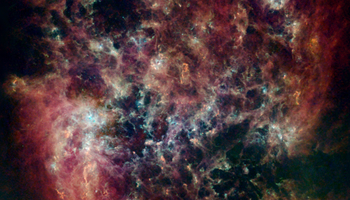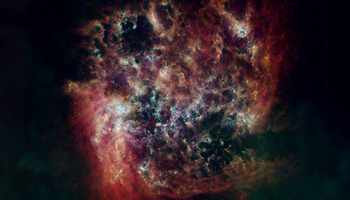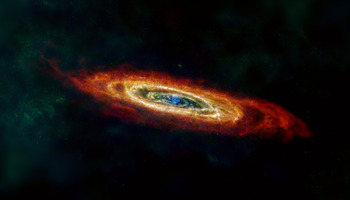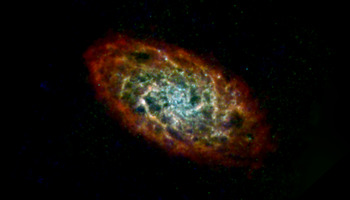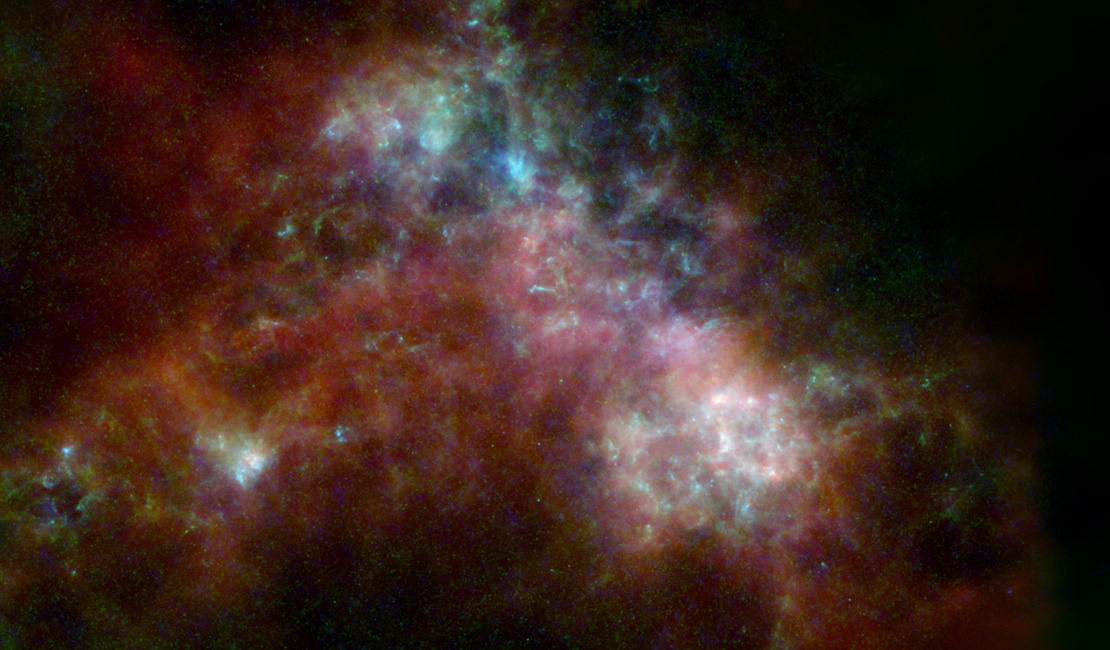
Dust and Gas in the Small Magellanic Cloud
The Small Magellanic Cloud, shown here, is a dwarf galaxy orbiting the Milky Way. The image includes data from the ESA (European Space Agency) Herschel mission, supplemented with data from ESAs retired Planck observatory and two retired NASA missions: the Infrared Astronomical Satellite (IRAS) and Cosmic Background Explorer (COBE).
Operated from 2009 to 2013, Herschel detected wavelengths of light in the far-infrared and microwave ranges, and was ideal for studying dust in nearby galaxies because it could capture small-scale structures in the dust clouds in high resolution. However, Herschel often couldnt detect light from diffuse dust clouds especially in the outer regions of galaxies, where the gas and dust become sparse and thus fainter. As a result, the mission missed up to 30% of all the light given off by dust. Combining the Herschel observations with data from other observatories creates a more complete picture of the dust in the galaxy.
In the image, red indicates hydrogen gas; green indicates cold dust; and warmer dust is shown in blue. Launched in 1983, IRAS was the first space telescope to detect infrared light, setting the stage for future observatories like NASAs Spitzer Space Telescope and James Webb Space Telescope. The Planck observatory, launched in 2009, and COBE, launched in 1989, both studied the cosmic microwave background, or light left over from the big bang.
The hydrogen gas was detected using the Parkes Radio Telescope and the Australia Compact Telescope Array, located in Australia and managed by the Commonwealth Scientific and Industrial Research Organisation (CSIRO); and the NANTEN2 Observatory in the Atacama Desert in Chile.
Image Details
- Date
- June 16, 2022
- ID
- nhsc2022-001c
- Type
- Observation
- Credit
- ESA/NASA/JPL-Caltech/CSIRO/NANTEN2/C. Clark (STScI)
Object Details
- Name
- Small Magellanic Cloud
- SMC
- Subject | Local Universe
- Galaxy Type Irregular
- Distance
- Lightyears 204,000
- Constellation
- Tucana
Downloads
Color Mapping
| Telescope | Spectral Band | Color Assigment | Wavelength |
|---|---|---|---|
| Herschel | Infrared (Far-IR) | Blue | 100.0 µm |
| Herschel | Infrared (Far-IR) | Green | 350.0 µm |
| NANTEN2 | Millimeter (CO (1-0)) | Red | 2.6 mm |
| Parkes | Radio (HI) | Red | 210.0 mm |


